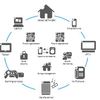By: Paula Bernier, TMC Executive Editor
The Internet and the smartphone have altered customer expectations related to service. They have both elevated the requirement for fast results in terms of response times, and they have made consumers more comfortable with finding answers themselves using the devices in their hands and the information that is now at their fingertips.
Meanwhile, communications providers continue to expand the ever-growing number of services they offer to consumers. That now includes an array of Internet access, mobile, and TV services. The growing number of CSP services and customers also increases the potential for more help desk inquiries.
Six to 53 percent of consumers across Brazil, Japan, the U.K., and the U.S. reported they had issues with their high-speed Internet, mobile, or TV services within the last six months, according to recent research done by Alcatel-Lucent’s Motive unit. This illustrates the potential for CSP help desk overload, given the four countries have nearly 500 million mobile subscribers, more than 164 million Internet subscribers, and nearly 200 million TV subscribers. That means if just 10 percent of these users have service issues in any given six-month period, CSPs in these countries could have to work to help 14 million dissatisfied consumers each month, according to the Motive research paper “Toward self-service: Empowering connected consumers to help themselves”.
While the help desk is the primary channel for helping customers with their problems, mobile apps can also help do the job, reducing costs, lowering the strain on help desks and improving customer experiences through the channel in the process, and responding to the trend toward customer self-service. Indeed, as the Motive white paper explains, CSP self-service applications in some cases have reduced help desk calls by up to 75 percent and lowered the frequency of expensive truck rolls by more than a fourth.
However, the white paper goes on to note that self-service app adoption can be a challenge. Indeed, it says, typical adoption of such apps is 30 percent or less. It is why CSPs need to redefine the customer experience leveraging self-help.
A recent blog, 10 strategies for communications service providers looking to offer appealing self-service apps, by Greg Owens, Senior Director, Customer Experience Solutions Marketing, Alcatel-Lucent, however, offers tips on how CSPs can successfully introduce and drive adoption for customer self-service apps.
His suggestions include:
- Offering late adopters an incentive to try self service
- Getting a handle on how frequently existing apps are used
- Learning what consumers want in terms of services, support, and billing, and giving that to them
- Promoting their apps so customers know about them and more will try them
- Choosing the right distribution platforms
- Steering clear of building multiple single-purpose apps
- Pushing apps to users
- Leveraging analytics to see how, when, and where apps are used
- Applying knowledge gained about self service from other industries.
Self-help if not done properly can be as if not more frustrating than dealing with an agent who either is not skilled, or is not empowered to solve your problem or answer your question. However, done correctly it not only reduces expense by significantly cutting contact center call volumes, but also can be a valuable tool in actually improving the customer experience.












